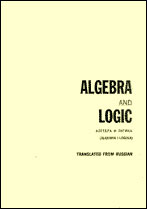|
This article is cited in 21 scientific papers (total in 21 papers)
Structure of a Conjugating Automorphism Group
V. G. Bardakov
Sobolev Institute of Mathematics, Siberian Branch of the Russian Academy of Sciences
Abstract:
We examine the automorphism group ${\rm Aut}(F_n)$ of a free group $F_n$ of rank $n\geqslant 2$ on free generators $x_1,x_2,\ldots,x_n$. It is known that ${\rm Aut}(F_2)$ can be built from cyclic subgroups using a free and semidirect product. A question remains open as to whether this result can be extended to the case $n>2$. Every automorphism of ${\rm Aut}(F_n)$ sending a generator $x_i$ to an element $f_i^{-1}x_{\pi(i)}f_i$, where $f_i\in F_n$ and $\pi$ is some permutation on a symmetric group $S_n$, is called a conjugating automorphism. The conjugating automorphism group is denoted $C_n$. A set of automorphisms for which $\pi$ is the identity permutation form a basis-conjugating automorphism group, denoted $Cb_n$. It is proved that $Cb_n$ can be factored into a semidirect product of some groups.
As a consequence we obtain a normal form for words in $C_n$. For $n\geqslant 4$, $C_n$ and $Cb_n$ have an undecidable occurrence problem in finitely generated subgroups. It is also shown that $C_n$, $n\geqslant 2$, is generated by at most four elements, and we find its respective genetic code, and that $Cb_n$, $n\geqslant 2$, has no proper verbal subgroups of finite width.
Keywords:
conjugating automorphism group, basis-conjugating automorphism group, occurrence problem in finitely generated subgroups, factorization of a group into a semidirect product.
Received: 07.12.2001
Citation:
V. G. Bardakov, “Structure of a Conjugating Automorphism Group”, Algebra Logika, 42:5 (2003), 515–541; Algebra and Logic, 42:5 (2003), 287–303
Linking options:
https://www.mathnet.ru/eng/al42 https://www.mathnet.ru/eng/al/v42/i5/p515
|


| Statistics & downloads: |
| Abstract page: | 588 | | Full-text PDF : | 151 | | References: | 85 | | First page: | 1 |
|





 Contact us:
Contact us: Terms of Use
Terms of Use
 Registration to the website
Registration to the website Logotypes
Logotypes







 Citation in format
Citation in format 
